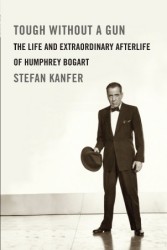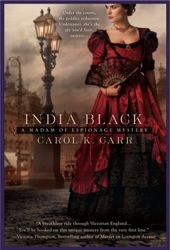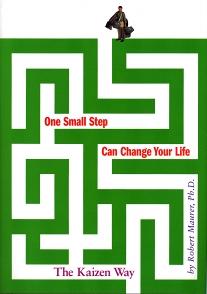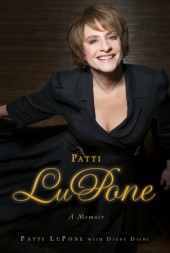Recommended Reading For Spring

Tough Without a Gun: The Life and Extraordinary Afterlife of Humphrey Bogart
By Stefan Kanfer
2011 – Knopf, 304 pages
Quick. Name a present-day actor who could convincingly play the lead roles in High Sierra, The Maltese Falcon, Casablanca, The African Queen and The Caine Mutiny. I’ll get back to you in a couple of days, when the best you’ll probably be able to come up with is Russell Crowe or George Clooney. And as talented as these gentlemen are, they ain’t Bogart.
Certainly this is far from the only biography of Humphrey Bogart, an actor that the American Film Institute named the Greatest Male Legend in Movie History. However Kanfer’s book is not only a comprehensive study of Bogart the man and actor, Tough Without A Gun also examines how and why Bogart became an icon since his death.
Born in 1899, Bogart came from a High Society family: his mother was a famous illustrator and his father a well-known surgeon. An indifferent prep school student, Bogart wound up in the Navy. After being discharged, Bogart – to the disappointment of his father – became involved in the New York theater. Initially hired as a stage manager, he eventually got the opportunity to take on acting roles. He was less than impressive.
The fascinating thing about Bogart is that he was a late bloomer. Success didn’t come early or easily. His first experience with Hollywood was disappointing and he found himself back on the New York stage. For those who don’t know the particulars of the legend, it was his searing performance in 1935 as Duke Mantee in the play The Petrified Forest that put him on Hollywood’s radar. But he had to plow his way through numerous mediocre gangster films – getting killed in most of them – before he stepped into the role that made him a genuine movie star.
When he played Phillip Marlowe in The Maltese Falcon, Bogart was already 42 years old. His best work, and all his classic films, would occur within the next sixteen years. Kanfer takes us through the films, the plays, and yes, the tumultuous marriages. For readers too young to understand what it meant to be under contract to a Hollywood studio, it will come as a shock to learn how little control many legendary movie stars had over their careers.
Bogart comes across as a complex - often depressive - but always authentic individual. If he had a code of ethics, it was his belief that one was either “a professional or a bum.” Looking over the current landscape of male movie stars, it’s disheartening to realize that most of them are little more than pretty faces, comic slobs or overgrown boys. Not one of them could convincingly play the genuinely adult male that was Bogart’s stock in trade. If you want to revisit the life and legacy of Bogie, you couldn’t do better than to rent some of his films – or read Tough Without A Gun.
(Sharon Pisacreta, April 2011)
India Black
By Carol K. Carr
304 pages, Berkley Trade, 2011
Any book that begins ‘My name is India Black. I am a whore’ suggests that our narrator has a colorful tale to tell. Carol K. Carr’s debut historical mystery India Black does just that. India is the young madam of a London brothel called Lotus House, which caters to the upper crust. It is the unexpected death of one of these titled gentlemen that kicks off the story. Sir Archibald Latham dies while engaged in some kinky activities with a Lotus House ‘bint’. (As one example of the kinkiness, Latham was dressed as Queen Victoria at the time.)
Latham held a position high up in the War Office, and India doesn’t want the authorities to know such an important person in the government died in her house. So off she goes in the middle of the night to find a way to dispose of the body. While she succeeds in getting rid of the late Archibald Latham, too many other people are aware of the fact that Latham died on her premises.
When Latham went to Lotus House that fateful night, he brought with him a briefcase containing military secrets. Unfortunately it has disappeared. Powerful and dangerous men now want the papers that were in the briefcase. One such man is a handsome English spy known as Mr. French, who blackmails India into helping him track down the missing documents. Soon after, India finds herself secretly drafted into government service by Disraeli himself, who also wants the documents.
The papers hold information related to the state of English readiness (or lack of readiness) for a Balkan war with the Russians. While this plot element seems rather weak, it matters very little to the momentum of the story. The Balkan plotline is basically what Hitchcock called ‘the MacGuffin “ -- a device that motivates everyone to go after it and each other. And it gives Carr the opportunity to throw nefarious Russian spies and femme fatales into the mix.
Set in 1876, India Black is nicely evocative of the era, especially when taking the reader on a tour of the darker and more disreputable neighborhoods of London. And the action is nearly nonstop. Whether India and French are scaling the outside of a London hotel, racing to Dover in a sleigh through a snowy English night, or being kidnapped and thrown aboard a smugglers’ ship, rest assured that they often have as many adventures as Indiana Jones.
But colorful action aside, what is most appealing about the book is the main character. As the narrator, India’s viewpoint is irreverent, worldly and witty. Or as India says, “Every word in this volume is the gospel truth. You can put your money on the counter and buy the book, or you can go to the devil. It’s all the same to me.”
Well, I put my money on the counter and bought the book. And when the second India Black book comes out, I have no doubt I will do the same again.
(Sharon Pisacreta, April 2011)
One Small Step Can Change Your Life: The Kaizen Way
By Robert Maurer
2004 – Workman Publishing Co., 182 pages
Now that it is spring, those well-intentioned New Year resolutions have probably been discarded. This won’t stop most of us from resolving next January to lose weight, stop smoking, save money, etc. But taking on such weighty ambitions is exactly what derails most people, at least according to UCLA Medical Center psychologist Robert Maurer, author of The Kaizen Way.
The Kaizen Way claims that lasting change is best effected one tiny step at a time, the psychological equivalent of the Chinese proverb “The longest journey starts with a single step.” Or as Maurer phrases it, “Small steps for continual improvement.”
This approach was successfully utilized during WWII when the U.S. government needed to maximize production with a diminished work force. The government created Training Wilkin Industries (TWI) management courses that encouraged supervisors to target the numerous small ways that business could be improved.
After the war, General MacArthur sent TWI specialists to Japan, hoping to increase the efficiency of Japanese businesses. This decision had such dramatic results that the Japanese adopted the process as their own, dubbing it ‘kaizen’. Ironically, while kaizen inspired the Japanese to continuously improve efficiency, kaizen fell out of favor in the U.S. due to the surplus of labor after WWII. Kaizen would not be re-introduced to American businesses until the 1980s.
Maurer was drawn to the subject when he began to investigate how and why people succeed, and once they do, how did these successful individuals remain successful. He learned that people do not try to change until a problem has become too big to ignore. The usual next step is to make a radical change in an attempt to fix things, such as to stop eating sugar if they’re trying to lose weight. But most of the time, such radical change is short-lived, and old patterns quickly return.
Instead kaizen suggests a person take “small, comfortable steps toward their improvement.” For example, one of Maurer’s clients was an overworked, overweight single mom who needed to adopt a more healthy lifestyle but was simply too exhausted after work to exercise. Maurer recommended that for one week she simply walk in place for one minute as she watched TV. The following week, he asked that she walk in place for two minutes, and so on. Within weeks, she was actively looking for additional ways to stay fit, and began exercising on a regular basis.
This easy approach starts with the question, “What else can I do in one minute a day?”, and works for everything from organizing a business to improving your relationships. Or as one client told Maurer, “The steps were so small I couldn’t fail.”
Under 200 pages, the book is an easy entertaining read. To help guide the reader through the process, The Kaizen Way lays out seven strategies and demonstrates how to visualize virtual change, otherwise known as mind sculpture. Maurer also weaves numerous success stories with the neuroscience research that explains why kaizen works.
He explains that big changes invariably cause fear, especially fear of failure. Being fearful inhibits creativity. Research shows that the brain is basically programmed to resist change. Conversely, the following quote from Maurer best sums up what is happening in our brain when we are practicing kaizen:
“As your small steps continue and your cortex starts working, the brain begins to create ‘software’ for your desired change, actually laying down new nerve pathways and building new habits. Soon your resistance to change begins to weaken…Eventually kaizen strategies will result in a neural network that welcomes and enjoys change.”
If you’ve tried to reduce your credit card debt, stop drinking, or get back to that jogging routine, The Kaizen Way is a fascinating primer in how to effortlessly go about it. And if one small step can indeed change your life, start today. Read this book.
(Sharon Pisacreta, April 2011)
Patti LuPone: A Memoir
By Patti LuPone
336 pages, Crown Archtype, 2010
Make no mistake. Broadway legend Patti LuPone wrote her memoir to not just tell the story of her theatrical life, she is also settling scores. With a narrative voice as bold and brash as her singing voice, LuPone’s memoir is unflagging in her love for the theater -- and her anger at those who exploited or humiliated her (ahem, Andrew Lloyd Webber).
The book begins and ends with LuPone’s great success in Gypsy. In between is a whole lot of singing, struggle, triumphs, and failures.
Although the first chapter deals with her childhood in Northport, Long Island, LuPone is not interested in giving us the usual details about the travails of growing up. Oh, we’re told a little bit about her colorful Sicilian family, but she devotes most of her attention to school recitals and singing and dancing with her brothers.
LuPone was devoted to the theater from her earliest days. As she writes, “For the most part, school was fun but boring...My heart belonged to the music department. It was the only place that I truly studied anything, and it was there that I learned to continue pursuing what I knew was my calling.”
The most significant event of her adolescent years was LuPone’s performance with her high school’s chorus at the prestigious New York State School Music Association. Chosen to sing the soprano solo of an original piece, LuPone woke up the morning of the performance with tonsillitis and a 105-degree fever. She was unable to swallow, much less sing.
But inspired by her teacher’s speech in which she asked her chorale students to sing that night for her handicapped son whose only joy was music, LuPone went on to perform her solo. Although she was rushed to a doctor immediately afterwards, LuPone “realized this achievement marked the beginning of the ownership of my talent, the responsibility to it and to the path that chose me at four years old.”
LuPone goes on to describe her years at Juilliard under John Houseman, her seven years involved with fellow acting student Kevin Kline, and the fun and exhaustion of being a member of the traveling Juilliard Acting Company.
Throughout, LuPone is refreshingly candid about those she adores (Mandy Patinkin) and those she doesn’t (Andrew Lloyd Webber). One of the most entertaining sections in the book involves her experience of working on the floundering musical The Baker’s Wife. LuPone writes, “There’s a saying in the theatre that if Hitler were alive today, his punishment should be to send him out on the road with a musical in trouble. The Baker’s Wife would have been the perfect sentence for Adolf.” The only thing she looked forward to in the play was singing the haunting ‘Meadowlark’. Alas, the song was eventually cut. Luckily, as LuPone herself recommends in the book, interested fans can check out videos of her performing this song on YouTube.
One can’t leave the discussion about The Baker’s Wife without relating LuPone’s opinion of her leading man, Topol (who seemed so lovable in the movie Fiddler on the Roof). According to LuPone, Topol was nothing like Teyve. “He was obnoxious, unprofessional, and verbally and physically abusive to the cast. I know there are supposed to be two sides to every story, but believe me, both sides thought he was an asshole.” I gotta tell you, even if she weren’t a Broadway icon, I would love her for that observation alone.
While the book is tremendously engaging up to this point, LuPone’s memoir next takes on the years – and the shows – that made her legendary. Evita, Les Miserables, Anything Goes, Sweeney Todd, Gypsy, and of course Sunset Boulevard. LuPone has fascinating things to say about all of these productions.
Here’s LuPone's take on first hearing the high notes required in the score of Evita: “As I listened to it, all I could think was that this guy, Andrew Lloyd Webber, hated women.” And although everyone from Meryl Streep to Ann-Margaret wanted the role of Evita, “what they were finding out was almost nobody could sing it. There are still probably only a handful of women who can sing Evita in the original keys.”
Although LuPone has had many triumphs, she devotes two whole chapters to the often demoralizing experience known as Sunset Boulevard. Webber comes in for a lot of criticism due to “his greed, his insecurity, his megalomania”. And LuPone even has a dart or two aimed at Glenn Close, the actress who opened on Broadway in the play instead of her. But LuPone admits that it was worth going through the painful experience if only for the rapturous ovation she received on her closing night of Sunset Boulevard in London.
It doesn’t end there, however. LuPone has triumphs ahead of her, especially Gypsy. What I found refreshing about this book, aside from LuPone’s unapologetic candor, was that it does not appear to be ghost written. The prose may not always be smooth, but it does seem to be the singular voice of Miss LuPone herself: intense, honest and brassy.
I’m sure that Broadway lovers and Patti LuPone fans ran out to buy this book as soon as it came out, But even if you only see an occasional play or musical, Patti LuPone: A Memoir will help you understand the passion, craziness and love that fuels the theater.
And don’t be surprised if you find yourself searching for ‘Meadowlark’ on YouTube.
(Sharon Pisacreta, April 2011)
Apr '11 - May '11
